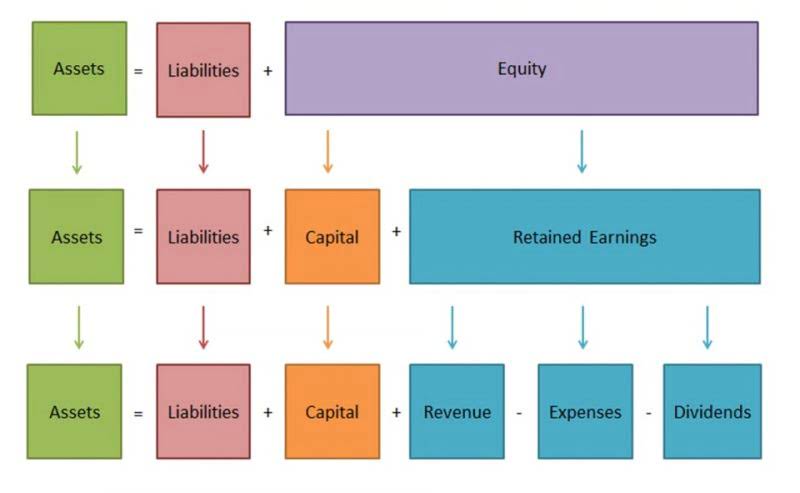- outubro 20, 2022
- Posted by: Cleilton
- Category: Bookkeeping

The company must also hire and train employees in an industry with exceptionally high employee turnover, and adhere to food safety regulations debt ratio formula for its approximately 18,253 stores.
- As is often the case, comparisons of the debt ratio among different companies are meaningful only if the companies are similar, e.g. of the same industry, with a similar revenue model, etc.
- At 0.3, Alphabet demonstrates that the company is not heavily reliant on borrowed funds, suggesting a strong financial position.
- If the debt-to-asset ratio is exceptionally high, it indicates that repaying existing debts is already unlikely, and further loans are a high-risk investment.
- The total debt-to-total assets ratio analyzes a company’s balance sheet.
- Unlike debt, the company does not require to pay to shareholders, it is the benefit of equity capital.
- The concept of leveraging debt has been a fundamental aspect of business and finance for centuries, enabling companies to grow beyond their immediate capital constraints.
- In a sense, the debt ratio shows a company’s ability to pay off its liabilities with its assets.
Debt Ratio vs. Times Interest Earned
In other words, the ratio does not capture the company’s entire set of cash “obligations” that are owed to external stakeholders – it only captures funded debt. The total funded debt — both current and long term portions — are divided by the company’s total assets in order to arrive at the ratio. This ratio is sometimes expressed as a percentage (so multiplied by 100).
How to Calculate P/B Ratio and Why “Tangible Book” Matters
Financial analysis templates offer structured frameworks and guidelines for conducting detailed debt ratio analysis and financial modeling. The interest coverage ratio evaluates a company’s ability to meet its interest obligations on outstanding debt. It measures the company’s ability to generate earnings sufficient to cover interest expenses.
How to Calculate the Debt Ratio
Debt ratios are used to assess the financial risk and health of not only businesses, but also non-profits, governments–and individuals. The main reason is that interest on borrowing must be paid regardless of whether the business is generating cash or not. Therefore, excessively leveraged companies may become unable to service their debt, forced to sell off important assets, or– in the worst case scenario–declare bankruptcy. Lenders and debt investors prefer lower D/E ratios as that implies there is less reliance on debt financing to fund operations – i.e. working capital requirements such as the purchase of inventory. In general, if a company’s D/E ratio is too high, that signals that the company is at risk of financial distress (i.e. at risk of being unable to meet required debt obligations).
- From the calculated ratios above, Company B appears to be the least risky considering it has the lowest ratio of the three.
- It is widely used by investors to gauge risk, by creditors to determine creditworthiness, and by companies to make strategic financing decisions.
- Both ratios, however, encompass all of a business’s assets, including tangible assets such as equipment and inventory, and intangible assets such as copyrights and owned brands.
- In other words, the ratio does not capture the company’s entire set of cash “obligations” that are owed to external stakeholders – it only captures funded debt.
Impact of Debt Ratio on Financial Health
A company could be liable for a year’s worth of recurring services purchased at one time from a customer vs. using a loan from a lender to purchase property or equipment. Assets include property, resources, or possessions that hold financial worth. A house or building that has accrued equity but is still under loan is both an asset and a debt. However, a property that has unpaid or outstanding debts where it is no longer profitable at sale is no longer an asset — it’s a liability. The debt ratio for public companies and small companies can differ depending on various factors such as the industry they operate in, their size, and their management’s financial strategy.
Business Lifecycle
A high debt-to-equity ratio implies that a company is aggressively using debt to finance its growth, which might increase the risk of financial instability. It provides insights into the proportion of a company’s financing derived from debt compared to assets. retained earnings However, all leverage ratios measure how much a company relies on borrowed funds versus its own funds on some level. The debt to asset ratio is a financial metric used to help understand the degree to which a company’s operations are funded by debt. It is one of many leverage ratios that may be used to understand a company’s capital structure. There are several different leverage ratios that may be considered by market analysts, investors, or lenders.


Conversely, a debt level of 40% may be easily manageable for a company in a sector such as utilities, where How to Run Payroll for Restaurants cash flows are stable and higher debt ratios are the norm. Market value ratios assess how a company is valued in the stock market relative to its financial performance. Analysts use market value ratios to understand whether a company’s shares are fairly priced, undervalued, or overvalued. A high debt-equity ratio can be good because it shows that a firm can easily service its debt obligations (through cash flow) and is using the leverage to increase equity returns. If the ratio is greater than one, it means the entity is significantly funded by debt. If the ratio less than 100%, it means some portion of the assets is funded by the equity.
- Before these investors finally decide to put their money into a company, they must know whether the company has enough assets to bear the expenses of debts and other financial obligations.
- Financial analysis templates offer structured frameworks and guidelines for conducting detailed debt ratio analysis and financial modeling.
- Companies with higher levels of liabilities compared with assets are considered highly leveraged and more risky for lenders.
- The debt ratio focuses strictly on debt instruments like loans, bonds, and notes payable.
- For example, if the firm has a higher level of liabilities compared to assets, then the firm has more financial leverage and vice versa.

Different industries have varying benchmarks for what is considered a healthy ratio. In contrast, industries like technology, which rely more on intellectual property and less on physical assets, may have lower ratios. However, what constitutes a “good debt ratio” can vary depending on industry norms, business objectives, and economic conditions. For instance, startups or companies in rapid expansion phases, too, may have higher ratios as they utilize debt to fund growth initiatives. While a higher ratio can be acceptable, carefully analyzing the company’s ability to generate sufficient cash flows to service the debt is essential.


